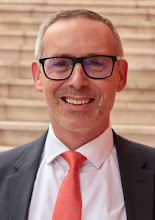Open Innovation Blueprint: Commandment 10
10. Reinforce and institutionalize the change
Sound bites uttered by managers and executives in speeches, meetings, and even at the water cooler help reinforce and institutionalize Open Innovation. Here is a list of phrases, sayings, and insightful come-backs you should arm your R&D managers with:
- Invention White Space – Reiterate that Open Innovation is not about outsourcing R&D. It’s about making innovation more efficient by avoiding the reinvention of the wheel. Open Innovation is about finding the areas where nobody has invented yet so talk to people about “Invention White Space”. After an in-depth Technology Scouting exercise, if nothing suitable is found, say to R&D “that’s where we should invent because it’s whitespace”, knowing with confidence you’re inventing something that is a) needed and b) nowhere else to be found.
- “Not Invented Here was invented here” – When Open Innovation comes to town, people start talking about the “Not Invented Here” syndrome that is believed to inhibit Open Innovation. Normal human inertia does cause this to some degree. To counter-balance it, make jokes like they make at P&G, like “Not Invented Here was invented here”.
- “Proudly Invented Elsewhere” – Similar to above, this phrase originally came from P&G, but no reason other companies can’t use the same catch phrase.
- “Half of our new products will come from us, half will come through us” – For those R&D people who feel their job is threatened by Open Innovation, a statement like this reminds them that most inventions found outside will not be “ready to go”. Often they’ll need to be integrated, packaged, combined with other internal or external inventions, or they will have production scale-up challenges that R&D needs to apply creativity to.
- “Use it or Lose It” – A great old expression you can apply in a new way to sustain Open Innovation at your company. Remind people that the reality today is other companies are making their IP available—they have a strong incentive to. So if we don’t use it, one of our competitors will. The imperative is to find it faster.
- “Stand on the shoulders of giants” – Many brilliant people have downplayed their genius by reminding us that they’ve only been able to achieve by standing on the shoulders of giants. Great inventors in your organization probably believe this too. What you want to do for them is make your Technology Scouting process so efficient at finding great inventions that they can come to rely on you to find the shoulders for them to stand on, the building blocks they need to achieve their own greatness.
- “Find our value add” – This concept, like many of the others, is another way of talking the need for people to identify the invention white space. Say to your employees that our value add is in understanding how to tailor the technology (whether an internal invention or external one) to the customer’s problem. Emphasize how much importance managers in your company will begin to place on rewarding the R&D people who demonstrate initiative in understanding the customer’s and market’s need.
- Edisonian Approach – Even Edison who lived long before a time of Open Innovation knew the importance of building upon others’ work. He said, "When I want to discover something, I begin by reading up everything that has been done along that line in the past - that's what all these books in the library are for. I see what has been accomplished at great labor and expense in the past. I gather data of many thousands of experiments as a starting point, and then I make thousands more." (Wikipedia.org)
White paper on "Implementing Open Innovation" now available
This blog series has been adapted into a white paper called "Implementing Open Innovation" that I would be happy to share with you and your company if you are looking to implement Open Innovation.
Sources
The analysis above draws on information from Suzanne Harrison’s new book, Einstein in the Boardroom, Henry Chesbrough’s book Open Innovation, the Harvard Business Review article on Procter & Gamble’s Connect and Develop program, Breakthrough by Stefik & Stefik, and my own interviews and experience. I would also like to thank Mike Docherty for inspiring use of a "series" for blogging. Thanks Mike.

